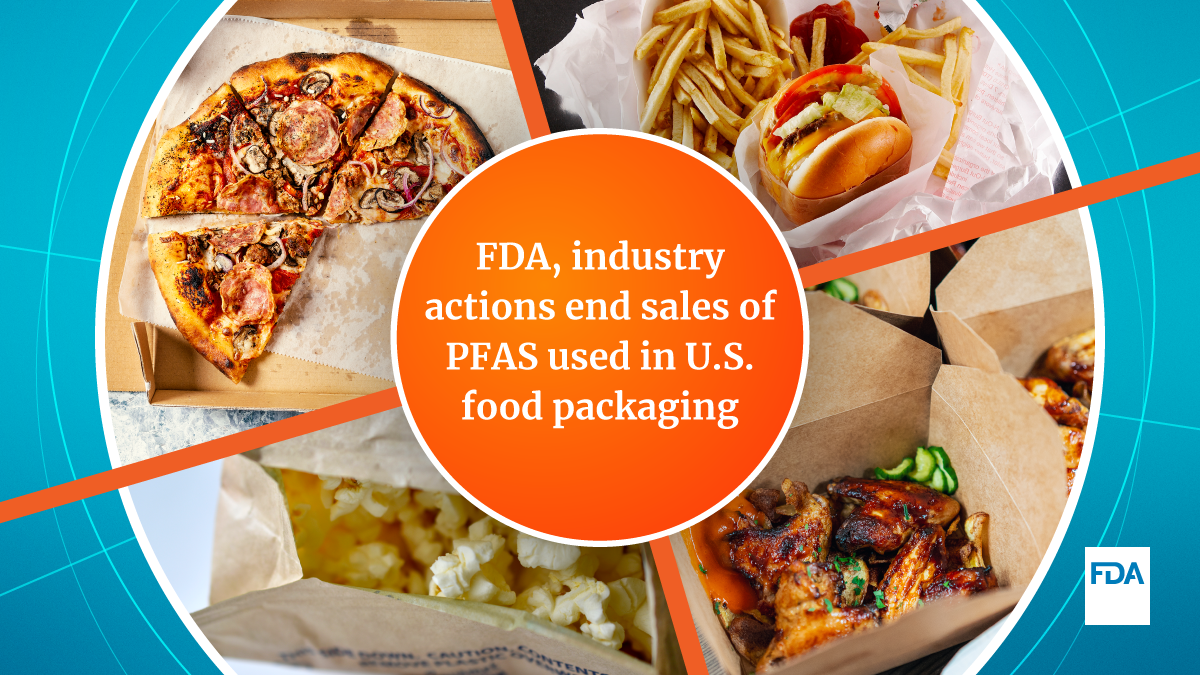The U.S. Food and Drug Administration is sharing updates on our activities to better understand Per- and Polyfluoroalkyl Substances (PFAS) in the general food supply, including recent testing results, continuing efforts to supplement our PFAS data and monitoring activities, and an updated analytical method to measure PFAS.
Source: Food & Drug Administration
Testing Results for PFAS in the General Food Supply
To estimate dietary exposure to PFAS from the general food supply, the FDA has been testing fresh and processed foods since 2019. To date, we have tested nearly 1,300 samples from a wide range of foods collected for the FDA’s Total Diet Study (TDS) or collected as part of targeted assignments. Our testing for PFAS in the general food supply is ongoing and we are taking steps to expedite our testing schedule by increasing our lab capacity.
Today, the FDA is sharing testing results for PFAS in 95 samples from one regional collection from the TDS (Dataset 8). We detected PFAS in eight samples — two beef and two cod samples, and one sample each of shrimp, salmon, catfish, and tilapia. The FDA concluded that exposure to PFAS at the levels measured in these eight samples is not likely to be a health concern for young children or the general population, based on evaluation of each PFAS for which there is a toxicological reference value. The data shared today are consistent with our previous TDS testing results that detected PFAS primarily in some meat and seafood samples, while the majority of previous TDS results were found not to detect PFAS. No PFAS have been detected in over 97% (788 out of 813) of the fresh and processed foods tested from the TDS to date.
Additional Activities to Better Understand PFAS in the U.S. Food Supply
In the past five years, the FDA has made significant progress in understanding PFAS and is leading the science in developing validated methods for testing for PFAS in increasingly diverse types of foods. As noted, the FDA has detected PFAS in very few TDS samples, primarily in meat and seafood samples. Our testing, which included a targeted survey to sample seafood, has so far indicated that seafood may be at higher risk for environmental PFAS contamination compared to other types of foods. While the data on PFAS in seafood is still very limited, filter feeders, such as clams, but also other bivalve mollusks, including oysters, mussels, and scallops, may have the potential to bioaccumulate more environmental contaminants than other seafood types. We continue to pursue additional sampling of bivalve mollusks, including imported and domestic clams, as well as other seafood to better understand PFAS in the U.S. food supply.
In FY24 and beyond, the FDA will continue to analyze TDS samples to increase the number of samples analyzed with the goal of accurately estimating U.S. consumers’ exposure to PFAS from foods. We analyze a wide array of foods through the TDS, including bread and grains; fruits and vegetables; and, meat, eggs, and dairy products, including milk. The FDA will continue to work closely with our federal partners and state departments of agriculture and health to share information and enhance collaboration in our efforts to gather a more robust dataset of PFAS in foods as we work together to reduce the public’s dietary exposure to PFAS.
Additional updates on PFAS sampling will be posted on our website as they become available.
In addition to our sampling activities, the FDA published an updated analytical method to the FDA’s Foods Program Compendium of Analytical Laboratory Methods: Chemical Analytical Manual. This method includes the addition of 14 analytes to the existing 16 analytes, resulting in the ability to measure 30 PFAS in food and extending the method to also include animal feed samples.
For More Information



![Shopping Cart Ordinance Among Most Read Stories in 2024 [#10]](https://lascrucesdigest.com/wp-content/uploads/2024/10/d4232c98-4af6-9a7d-cda9-ccc2add08ae6.jpg)